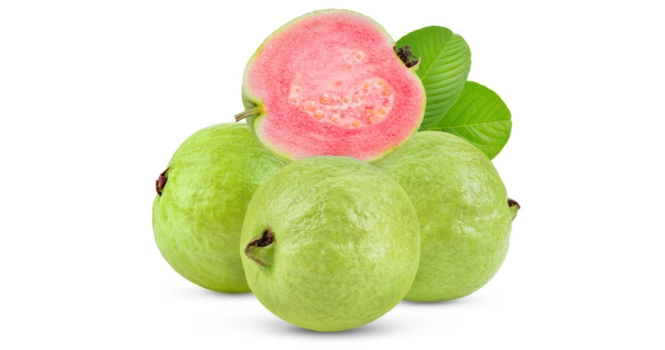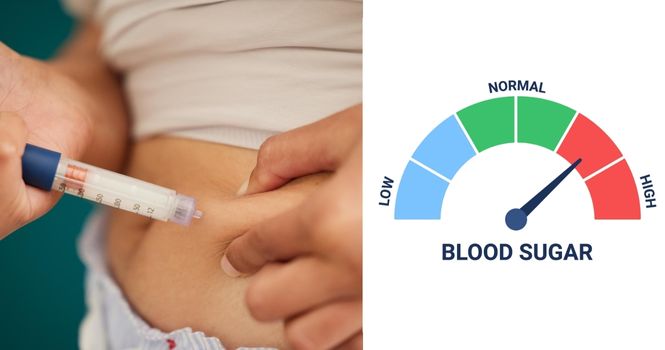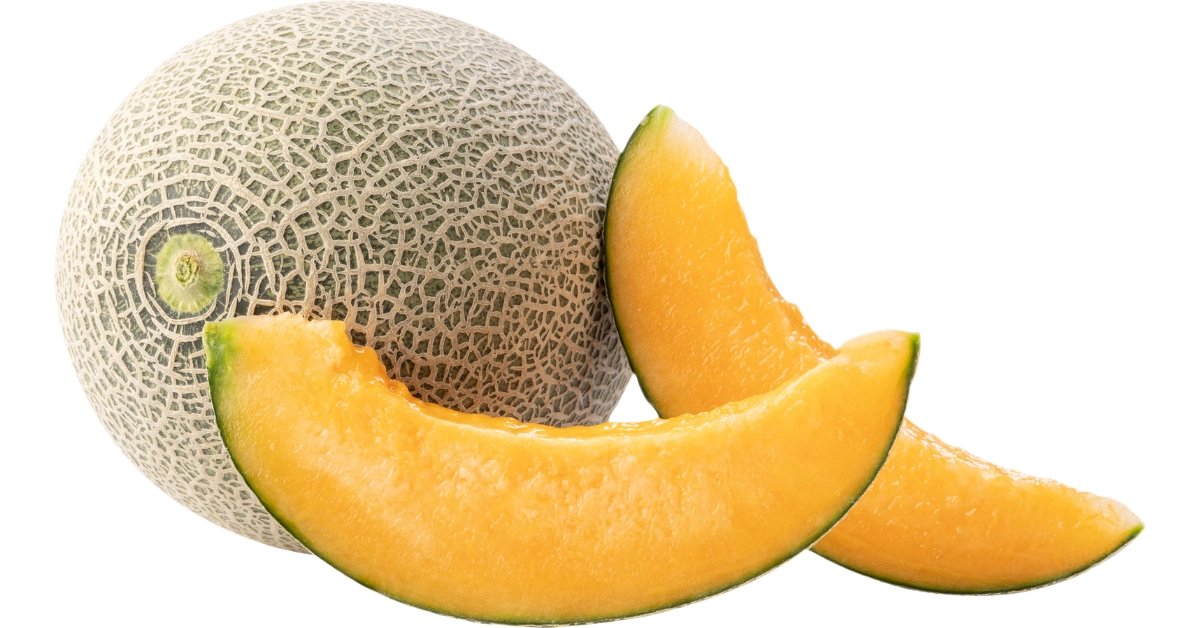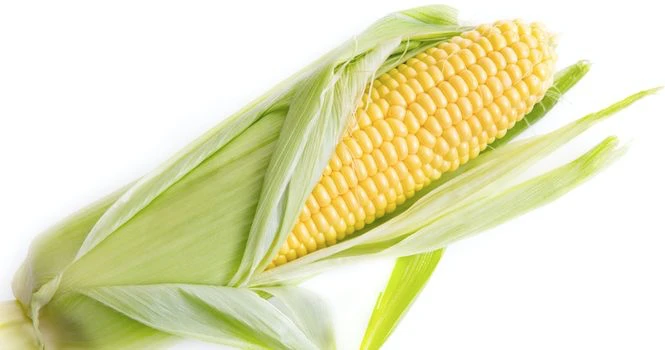Guava is a tropical fruit renowned for its distinct flavor and impressive nutritional profile of being one of the richest natural sources of Vitamin C among fruits. Originating from Central America, it has a unique taste that blends sweet and tart notes, often compared to a mix of strawberry and pear.
The fruit varies in color, with pink, red, or white flesh and a green to yellow skin. Notably rich in vitamin C, dietary fiber, and antioxidants, guava offers numerous health benefits, making it a valuable addition to a balanced diet.
Its versatility in culinary uses, ranging from raw consumption to being featured in jams, desserts, and savory dishes, further enhances its global appeal.
Other Common Names of Guava
Guava is known by various names in different regions and cultures. Some of these include:
- Psidium guajava: The scientific name for the common guava.
- Bayabas or Biyabas: In the Philippines and some parts of Southeast Asia.
- Guayaba: In Spanish-speaking countries.
- Amrood: In North India and Pakistan.
- Goiaba: In Portuguese, particularly in Brazil.
- Koyya: In some parts of South India.
- Jambu Batu: In Malaysia and Indonesia.
- Feijoa: For a different but related fruit, Pineapple Guava (Feijoa sellowiana).
- Guava-apple or Apple Guava: Occasionally used in English-speaking countries to describe its apple-like shape
In Indian languages :
- Hindi: Amrood
- Bengali: Peyara
- Marathi: Peru
- Gujarati: Jamphal or Jamrukh
- Tamil: Koyya
- Telugu:Jāma
- Kannada: Seebe
- Malayalam: Perakka
- Odia: Pijuli
These names vary regionally and are often influenced by the local dialects and cultural nuances of each area in India.
Nutritional Facts in 1 medium-sized Guava (about 55 grams)
| Nutrient | Content |
| Calories | Approximately 37-40 calories |
| Carbohydrates | About 8 grams |
| Dietary Fiber | Roughly 3 grams (12% RDI) |
| Protein | Around 1.4 grams |
| Total Fat | Less than 0.5 grams |
| Vitamin C | 140% of the RDI* |
| Vitamin A | 12% of the RDI |
| Potassium | 5% of the RDI |
| Magnesium | 5% of the RDI |
| Folate (Vitamin B9) | 7% of the RDI |
| Other Nutrients | Trace amounts of vitamin E, vitamin K, calcium, and iron |
RDI is Recommended Daily Allowance
Types of Guava
Guava is a diverse fruit with several varieties, each with unique characteristics in terms of flavor, texture, and nutritional profile. The most common types of guava are listed below:
1. Apple Guava (Psidium guajava): The most common type, known for its round shape and light green to yellow skin. The flesh can be white, pink, or red and is sweet with a slight tartness.
2. Pineapple Guava (Feijoa sellowiana): Also known as feijoa, this variety has a flavor that resembles a combination of pineapple, apple, and mint. It has a greenish skin and a jelly-like flesh.
3. Strawberry Guava (Psidium littorale): Smaller in size with a deep red skin, its flesh is sweet and aromatic, similar to a strawberry. This type is often used in jams and desserts.
4. Lemon Guava (Psidium cattleianum): Similar in size to strawberry guava, it has a more yellowish skin and a lemony flavor. It’s less sweet compared to other varieties.
5. Tropical White Guava: Known for its creamy white flesh and a flavor that is more mild and less acidic than the standard apple guava. It’s often used in smoothies and fruit salads.
6. Tropical Pink Guava: This variety has a bright pink or red flesh with a sweet and tangy flavor. It’s highly aromatic and is popular in juices, desserts, and sauces.
7. Red Malaysian Guava: Notable for its deep red flesh and slightly floral taste. It’s rich in antioxidants and is often eaten raw or used in beverages.
8. Mexican Cream Guava: As the name suggests, this variety has a creamy white flesh with a flavor that’s a blend of sweet and tart. It’s great for eating fresh or in fruit salads.
Each type of guava brings its own unique flavor and texture, making them versatile for various culinary uses. They’re enjoyed around the world in different forms, from raw consumption to being a key ingredient in exotic dishes.
Difference between Guava vs Pears
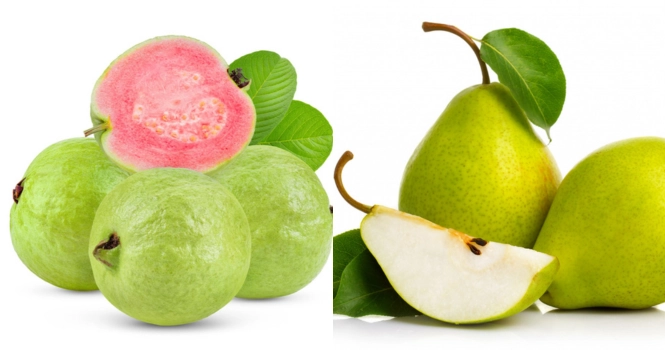
| Aspect | Guava | Pears |
| Origin and Cultivation | Native to tropical Central and South America, now grown in tropical/subtropical areas. | Originated in Europe and Asia, cultivated in temperate regions globally. |
| Nutritional Profile | Rich in Vitamin C, dietary fiber, Vitamin A, potassium; low in calories. | High in fiber, Vitamin C, potassium; low in calories and glycemic index. |
| Texture and Flavor | Cross between strawberry and pear flavors, firm to slightly soft texture, edible seeds. | Sweet, mild flavor; soft, buttery texture when ripe; no central seeds. |
| Culinary Uses | Used in juices, jams, desserts, savory dishes; eaten raw or cooked. | Eaten raw, baked, or poached; in desserts, salads, pairs well with cheese. |
| Shelf Life and Storage | Shorter shelf life, best when fresh or slightly soft. | Longer shelf life, ripen after being picked, can be stored longer. |
| Health Benefits | Boosts immunity, skin health, potential anti-cancer properties. | Aids in digestion, weight management, suitable for diabetic diet. |
Glycemic Index of Guava
Guava typically has a low glycemic index. The GI of raw guava usually ranges between 20 to 29, categorizing it as a low-GI food.
This low GI indicates that guava causes a slower and lower rise in blood sugar levels compared to high-GI foods.
While guava ranks low on the GI scale, some dried fruits have a higher glycemic load—check out our article on Anjeer Glycemic Index: Balancing Sweetness with Health for a detailed look at figs.
Glycemic Index of Guava Juice
The glycemic index of guava juice can be higher than that of whole guava fruit. This is because juicing can remove dietary fiber, which plays a key role in slowing down the absorption of sugar into the bloodstream.
The GI of guava juice is generally moderate but can vary depending on whether the juice is fresh, contains added sugars, or is processed. Typically, it might range from 30 to 50.
Glycemic Load of Guava
Glycemic load takes into account both the glycemic index and the carbohydrate content in a typical serving of the food.
Guava has a low glycemic load due to its low carbohydrate content and high fiber. The GL for a standard serving size of guava (about 120 grams) is estimated to be around 4 to 6, which is considered low.
This low GL indicates that guava has a minimal impact on blood sugar levels when consumed in typical serving sizes.
Can Diabetics eat Guavas?
Yes, diabetics can eat guavas. In fact, guava is often considered a beneficial fruit for individuals with diabetes due to its low glycemic index (GI) and high dietary fiber content. Here are some reasons why guavas can be a good choice for diabetics:
Low Glycemic Index: Guava has a low GI, meaning it does not cause rapid spikes in blood sugar levels. This makes it a suitable fruit for diabetics who need to manage their blood glucose levels.
High Dietary Fiber: Guava is rich in dietary fiber, which slows down the absorption of sugar in the bloodstream, helping to prevent sudden increases in blood sugar levels.
Rich in Vitamins and Nutrients: Guava is high in vitamins C and A, potassium, and antioxidants, which are beneficial for overall health. These nutrients can help in boosting immunity, which is important for diabetics, as they may have a higher risk of infections.
Supports Weight Management: The fiber content in guava can also aid in weight management, which is crucial for diabetics. Maintaining a healthy weight can improve insulin sensitivity and blood sugar control.
However, it is important for diabetics to consider the following:
- Portion Size: Even though guavas have a low GI, portion size should still be controlled. Eating guavas in moderation is key to managing blood sugar levels effectively.
- Whole Fruit vs. Juice: Eating whole guavas is preferable to drinking guava juice, as the whole fruit contains more fiber and has a lower glycemic impact.
- Individual Response: Individual responses to different foods can vary, so it’s important for diabetics to monitor their blood sugar levels and see how their body responds to guava.
As with any dietary changes, it’s advisable for diabetics to consult your doctor or a dietitian to determine what is best for their individual health needs.
Health Benefits of Guavas
Guavas are a highly nutritious fruit with numerous health benefits. Here’s an overview of the key health benefits of guavas:
1. Rich in Nutrients: Guavas are a great source of vitamins and minerals. They are exceptionally high in vitamin C, providing more than oranges. They also contain vitamin A, vitamin E, and several B-complex vitamins. Minerals in guavas include potassium, magnesium, and small amounts of calcium and iron.
2. High in Dietary Fiber: Guavas are packed with dietary fiber, which is beneficial for digestive health. Fiber aids in regular bowel movements and can help prevent constipation.
3. Boosts Immunity: The high vitamin C content in guavas helps boost immunity and can protect against common infections and pathogens.
4. Heart Healthy: Guavas may have a positive effect on heart health. They help in lowering blood pressure and cholesterol levels, which are significant risk factors for heart disease. The potassium in guavas also helps regulate heart rate and blood pressure.
5. Aids in Weight Loss: Being low in calories and rich in fiber, guavas can be a satisfying snack that aids in weight management. The fiber content keeps you full, reducing the likelihood of overeating.
6. Anti-Cancer Properties: The antioxidants in guavas, including vitamin C, lycopene, and quercetin, have been shown to have anti-cancer properties. These antioxidants help neutralize harmful free radicals in the body, potentially reducing the risk of some cancers.
7. Good for Skin Health: The vitamins and antioxidants in guavas can also benefit skin health. Vitamin C, for instance, plays a crucial role in collagen synthesis, which is important for skin firmness and elasticity.
8. Blood Sugar Regulation: Due to their low glycemic index and high fiber content, guavas can help in regulating blood sugar levels, making them a suitable fruit for diabetics or those at risk of diabetes.
9. Improves Vision: Vitamin A in guava is known for improving eyesight or vision. It can help slow down the appearance of cataracts, macular degeneration, and improve overall eye health.
Frequently Asked Questions
What fruits are low on the glycemic index?
Fruits that are low on the glycemic index (GI) typically have a GI value of 55 or less. These fruits release sugars more slowly into the bloodstream, which can be beneficial for blood sugar management. Here’s a list of some low-GI fruits:
1. Cherries – GI score around 20
2. Grapefruit – GI score around 25
3. Dried Apricots – GI score around 31
4. Pears – GI score around 38
5. Apples – GI score around 39
6. Oranges – GI score around 40
7. Plums – GI score varies (fresh plums are lower than prunes)
8. Strawberries – GI score around 41
9. Peaches – GI score around 42
10.Grapes – GI score around 46
11.Coconut – GI score around 45
12. Bananas – GI score varies depending on ripeness (less ripe bananas have a lower GI)
13. Kiwifruit – GI score around 50
14. Blueberries – GI score around 53
15. Mangoes – GI score just under 55
Remember that the GI of fruits can vary based on ripeness and other factors. Also, while low-GI fruits are a healthier choice for managing blood sugar levels, portion size and overall dietary context also play significant roles in glycemic control.



